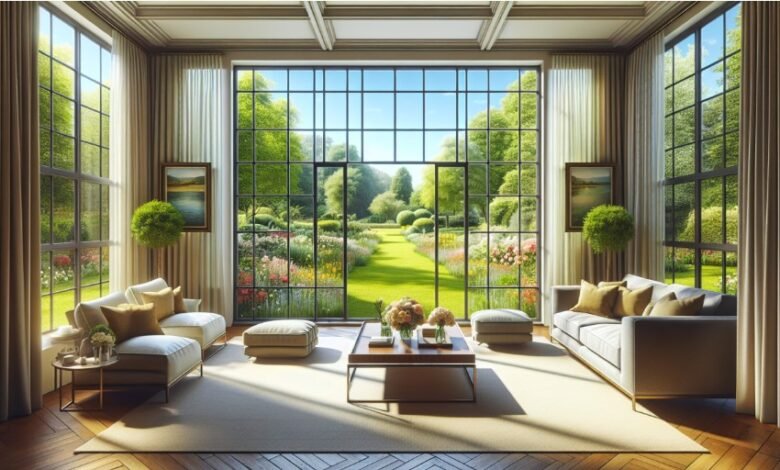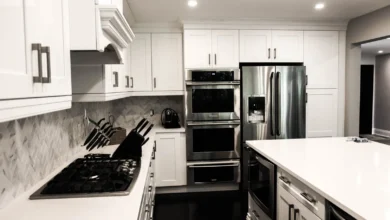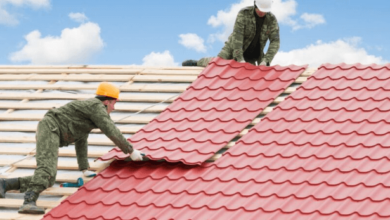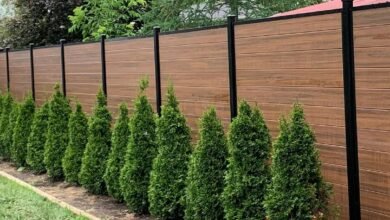The Role of Picture Windows in Modern Architecture

Introduction to Picture Windows
Picture windows are a defining feature of modern architecture, offering a seamless connection between indoor and outdoor spaces. These large, fixed windows provide an unobstructed view of the surrounding landscape, allowing natural light to flood the interior and creating a sense of openness and transparency.
The History of Picture Windows
The concept of picture windows can be traced back to the early 20th century, with the advent of modernist architecture. Architects such as Ludwig Mies van der Rohe and Philip Johnson popularized the use of large, fixed windows in their designs, emphasizing the importance of natural light and views in modern living spaces.
The Benefits of Picture Windows
Increased Natural Light
One of the primary benefits of picture windows is the abundance of natural light they allow into a space. Natural light has been shown to improve mood, productivity, and overall well-being, making picture windows an attractive feature in both residential and commercial settings.
Unobstructed Views
Picture windows provide a clear, uninterrupted view of the outdoors, blurring the lines between interior and exterior spaces. This connection to nature can have a calming and restorative effect, enhancing the overall experience of a space.
Energy Efficiency
Modern picture windows are often designed with energy efficiency in mind, incorporating features such as low-E coatings and insulated glass to reduce heat transfer and improve thermal performance. This can lead to lower energy costs and a more comfortable living environment.
Designing with Picture Windows
Placement and Orientation
When incorporating picture windows into a design, it is essential to consider their placement and orientation. Windows should be positioned to maximize views and natural light while minimizing unwanted heat gain or glare.
Framing and Materials
The framing and materials used for picture windows can have a significant impact on their overall appearance and performance. Common framing materials include wood, aluminum, and vinyl, each with its own unique aesthetic and functional properties.
Integration with Other Design Elements
Picture windows should be thoughtfully integrated with other design elements, such as walls, flooring, and furniture, to create a cohesive and harmonious space. The use of complementary materials and colors can help to enhance the visual impact of the windows.
Picture Windows in Residential Architecture
Living Rooms and Great Rooms
Picture windows are a popular choice for living rooms and great rooms, where they can provide a stunning focal point and a connection to the outdoors. In these spaces, picture windows are often combined with other window styles, such as casement or awning windows, to allow for ventilation.
Bedrooms and Bathrooms
In bedrooms and bathrooms, picture windows can offer a sense of privacy while still allowing natural light to enter the space. Frosted or textured glass can be used to maintain privacy while still providing a connection to the outside world.
Kitchens and Dining Areas
Picture windows in kitchens and dining areas can provide a pleasant view while cooking or entertaining, enhancing the overall experience of the space. In these areas, windows are often positioned above countertops or sinks to maximize functionality.
Picture Windows in Commercial Architecture
Office Buildings
In office buildings, picture windows can help to create a productive and engaging work environment by providing natural light and views of the surrounding landscape. They can also contribute to the overall aesthetic and brand identity of a company.
Retail Spaces
Picture windows are an essential element in retail spaces, allowing passersby to view products and creating an inviting atmosphere. They can also be used to showcase displays and create visual interest, drawing customers into the store.
Institutional Buildings
In institutional buildings, such as schools and hospitals, picture windows can provide a connection to the outdoors and a sense of openness, helping to create a more comfortable and welcoming environment for occupants.
Read also: Revolutionizing Learning and Collaboration: The Impact of Interactive Flat Panel Displays
Challenges and Considerations
Privacy Concerns
While picture windows offer numerous benefits, they can also present privacy concerns, particularly in residential settings. The use of window treatments, such as curtains or blinds, can help to mitigate these concerns while still allowing natural light to enter the space.
Maintenance and Durability
Picture windows, like all windows, require regular maintenance to ensure their longevity and performance. This may include cleaning, sealing, and periodic inspections to identify and address any potential issues.
Cost and Budget
The cost of picture windows can vary depending on factors such as size, materials, and glazing options. It is important to consider the overall budget for a project when incorporating picture windows into a design.
The Future of Picture Windows
Technological Advancements
As technology continues to evolve, so too do the possibilities for picture windows. Advancements in glazing technologies, such as smart glass and photovoltaic glass, may offer new opportunities for energy efficiency and functionality.
Sustainable Design
Picture windows can play a role in sustainable design by reducing the need for artificial lighting and contributing to the overall energy efficiency of a building. The use of sustainable materials and environmentally friendly manufacturing processes may become increasingly important in the future.
Integration with Smart Home Technology
The integration of picture windows with smart home technology, such as automated shading systems and energy management platforms, may offer new opportunities for convenience and efficiency in the future.
Conclusion
Picture windows are a vital element in modern architecture, offering a range of benefits from increased natural light and unobstructed views to improved energy efficiency and a connection to the outdoors. By carefully considering factors such as placement, materials, and integration with other design elements, architects and designers can effectively incorporate picture windows into both residential and commercial projects, creating spaces that are both functional and visually striking.
As technology and design trends continue to evolve, it is likely that picture windows will remain an essential component of modern architecture, adapting to meet the changing needs and preferences of occupants while maintaining their fundamental role in connecting interior and exterior spaces.




